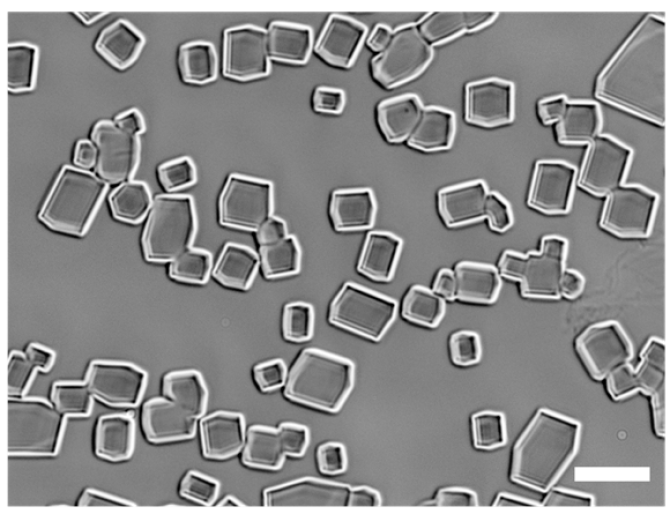
News
Digitally designed protein works like an anti-freeze for biological material
Dutch and American researchers have used computer simulations to develop a protein that works like an anti-freeze agent. Researchers could use this protein to freeze and defrost biological material such as immune cells, sperm and perhaps even donor organs in the future, without causing any damage to the material. This was reported by chemists at Wageningen University & Research (WUR), Eindhoven University of Technology (TU/e) and Washington University in the scientific journal PNAS.
Chucking summer fruit like strawberries into the freezer doesn’t work very well. When defrosting, the juice partially runs out, leaving a sort of strawberry mush—not very tasty. This is partly due to the ice crystals that form inside the strawberry during the freezing and defrosting process, which puncture the cell structure from within. The same thing happens to frozen donor organs, sperm and immune cells for immunotherapy.
Fish trick
An international research term led by Renko de Vries from WUR and Ilja Voets from TU/e used the computer to develop a protein that combats the formation of ice crystals. To this end, they took inspiration from a trick used by fish. “Nature has already found ways to handle freezing temperatures,” explains Rob de Haas, PhD student of Physical Chemistry and Soft Matter at WUR and first author of the publication. For instance, in the Arctic Ocean, where the temperature lies below freezing point, fish swim around without freezing. “They generate anti-freeze proteins that prevent the formation of ice in their bodies.”
Although scientists have known about anti-freeze proteins for much longer, they are incredibly complex and difficult to recreate. That is why De Haas created a simplistic version, first on the computer and then in the lab. He began with the simplest version known to scientists: an anti-freeze protein in American plaice. He further simplified the fish’s protein digitally by removing any protrusions. What remained is what scientists term an alpha helix. This is a spiral-shaped protein, like the spring in a pen.
Twisted out of shape
Just like a spring, an alpha helix has a stable shape. But if you twist it, you can reshape it slightly. “It occurred to me that the natural anti-freeze proteins in fish were reshaped like this,” says De Haas. This had not yet occurred to any other researchers. The PhD student then built the anti-freeze protein on his computer, first in a perfect spiral shape and then gradually twisted. By doing so, he eventually developed four digital variants, which he then recreated in bacteria in the laboratory.
“I tested the functioning of the four anti-freeze proteins by adding the bacteria to a shallow pool of water, which I then cooled to almost freezing point,” describes De Haas. He studied the ice crystals under the microscope. Although ice crystals cannot be prevented, they appeared to be slightly smaller and less destructive when the twisted anti-freeze proteins were present. “By twisting the protein, the amino acids that latch on the water crystals align exactly,” explains De Haas. In this way, the anti-freeze protein fits onto the ice as if in a perfect mould, preventing ice crystals from developing any further beneath it.

Pig sperm
Despite the success, the artificial anti-freeze protein is still not ready to be applied to transplant organs. “That still lies far in the future,” says De Haas. “We first want to test whether our anti-freeze agent prevents damage when freezing and defrosting simple cells.” It is the defrosting process that usually causes issues. The process of freezing cells quickly can be simplified by immersing them in liquid nitrogen. But defrosting them remains a gradual process in which sharp ice crystals are given enough time to form and damage biological material. “The first tests conducted by fellow researchers from the Animal Breeding and Genomics chair group showed a positive effect of our anti-freeze protein on the survival of frozen and defrosted pig sperm. This offers perspectives for further joint research,” says De Vries.
An extra advantage of the WUR anti-freeze protein is that it is the simplest of its type. “The anti-freeze proteins that emerge in nature are incredibly difficult to study,” says De Haas. There is a huge range of varieties and because of their complex forms, scientists do not always understand how they work. With his artificial protein, De Haas brought the anti-freeze protein back to absolute basics. Voets: “For the first time ever, we can now digitally design anti-freeze proteins and measure them solely at the protein level1. Thanks to these two discoveries, we can better study how anti-freeze proteins exactly work in the future.”